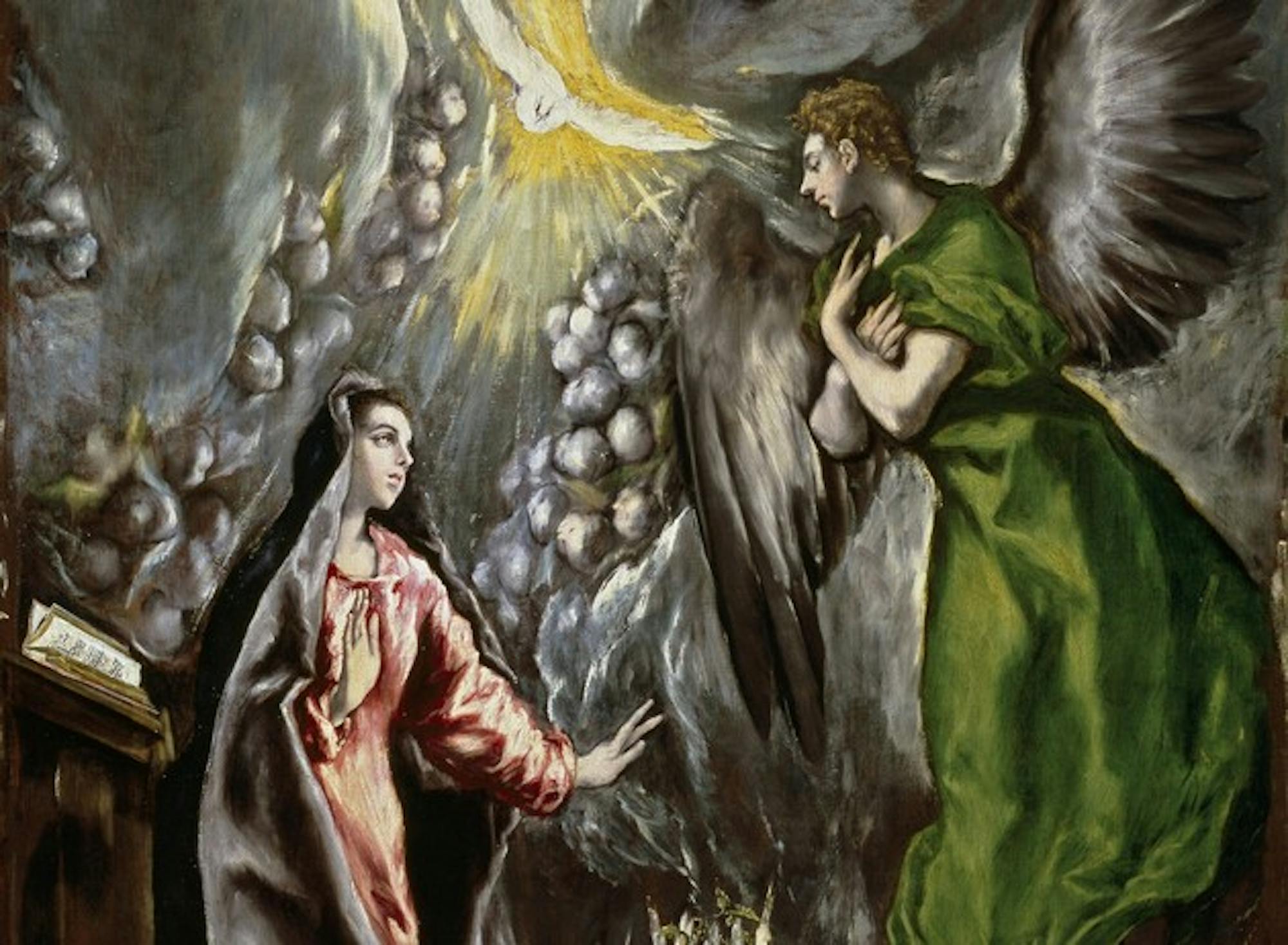The Greek himself is largely the focus of this exhibit of Spanish art, currently on view. Fortunately for those who know little about painters of late- and post-Renaissance art in Spain, this exhibit offers plenty, even for the most casual art lover: I watched what must have been a 10-year-old kid who, after ambling with disinterest through a gallery of portraits, found himself in front of El Greco's wild "Annunciation" and mumbled a startled, "Wow."
But more worldly museum visitors, weary of the hundreds of Madonnas and Christs painted in a similar style, can also find refuge with El Greco. His elongated, quixotic figures with pale, almost fluorescent skin are set in fantastically alien landscapes. His work seems like that of a surrealist born too early. El Greco's experimental technique shuns many of the traditional themes and arrangements of religious scenes that were so entrenched in the beginning of the 17th century.
El Greco's wonderfully heartening "Annunciation" (1596-1600) is clearly one of the centerpieces of this exhibition. The drama of this imposingly large painting (over 10 feet high) can scarcely be expressed in any reproduction. A swirl of thick, grape-like clouds usher in a radiant dove and an angel as the incredulous Mary looks up in amazement. The image is haunting -- and alien. This is not grandfather Giottto's "Annunciation."
Diego Velazquez is the other genius of post-Renaissance Spanish art. I was disappointed that this brilliant artist was represented here by his lesser works, but his attention to subtlety animates paintings like "An Old Woman Cooking Eggs" (1618). These are modest works, compared to the sprawling altar-pieces and immense portraits of nobility seen elsewhere in the exhibit.
The exhibit surprised with its illumination of lesser-known painters, who are often lost in the shuffle between these two titans. The highlight of the entire show comes from a less famous artist, Francisco Ribalta. His immense devotional painting, "Saint Francis Embracing the Crucified Christ" (ca. 1620), is at first glance macabre, graphically depicting the gore of Christ's torments, but the profoundly expressive faces create an unearthly drama.
This painting alone is worth the price of admission. There's nothing high-resolution enough, no book or web site that could recreate those harrowing expressions. Your only chance to see it in person, while still just a Dartmouth Coach ride away, is before July 27, when the exhibition heads to North Carolina. Tickets to the exhibition are $23 for adults and $21 for students.




